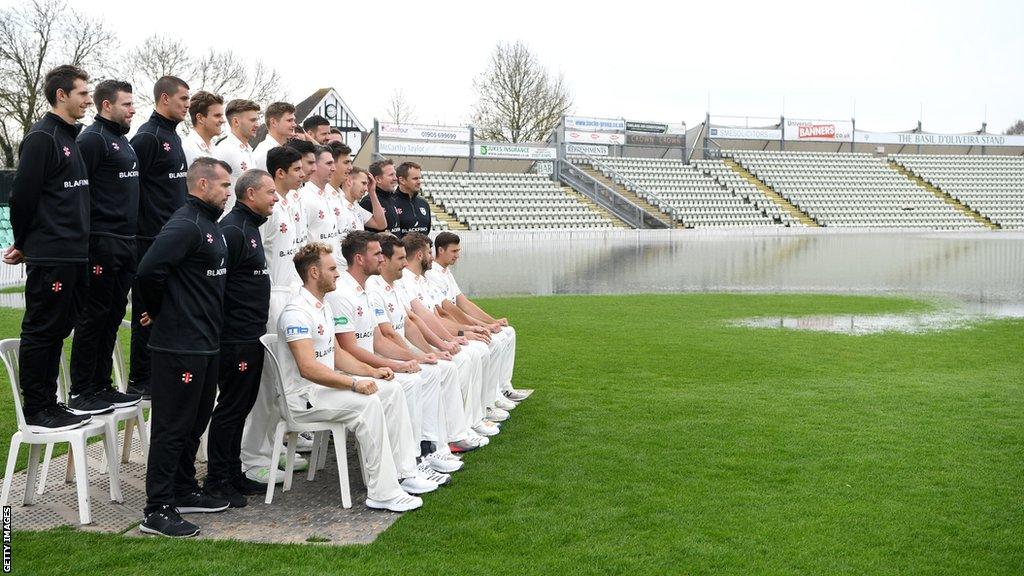Climate Change: ECB signs up to UN's Sports for Climate Action Framework
- Published

Worcestershire's New Road home floods regularly, and the ECB says 40% of its cricket grounds are at risk of flooding or drought
The England and Wales Cricket Board (ECB) has pledged to cut emissions by half by 2030, and to reach net zero for greenhouse gas emissions by 2040.
The targets form part of the governing body's sustainability plan for cricket, which includes the ECB signing up to the UN's Sports for Climate Action Framework.
The ECB also wants to eliminate single-use plastic at all venues by 2025, end landfill waste by 2035 and encourage players, supporters and clubs to reuse rather than dispose.
Gloucestershire, Surrey and Marylebone Cricket Club (MCC) are already committed to the UN's Sports for Climate Action plan.
ECB plans for 'more circular economy'
In its report,, external the ECB said its three priorities are to tackle climate change, manage resources and waste, and protect the natural environment.
Within that they aim to "build a more circular economy with longer lifecycles and higher 'end of use' value for everything we use, rather than following the old models of buy-use-dispose-buy".
This would apply to equipment, which is one of the biggest resources needed in cricket.
However, the ECB report said limiting the expansion of the sport was not the answer.
The report said: "[The] expansion of cricket has increased participation, diversity and engagement, and brought social value to our communities and stakeholders. But it has also increased overall emissions.
"Reducing the amount of cricket and achieving less social value cannot be our approach to reducing emissions.
"We shall need to look at lower carbon alternatives and efficiencies to achieve reduction targets."